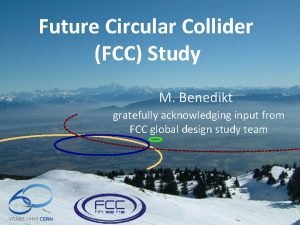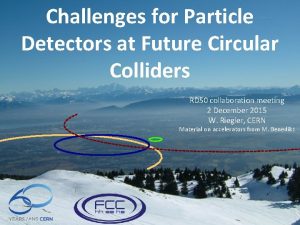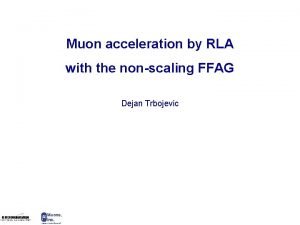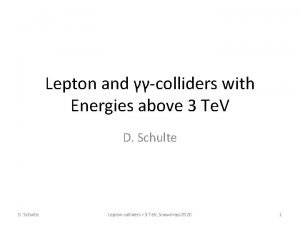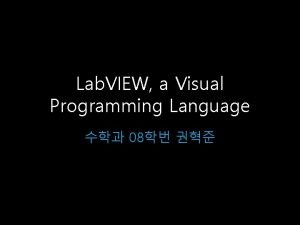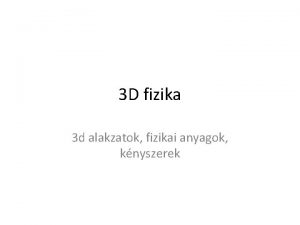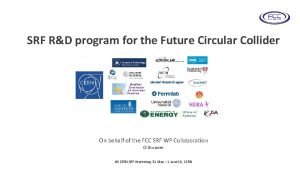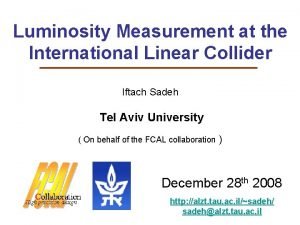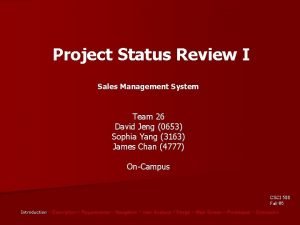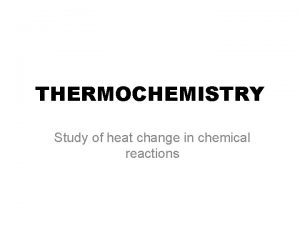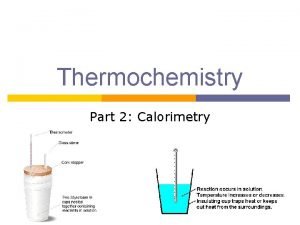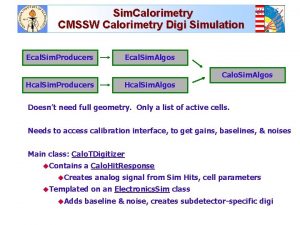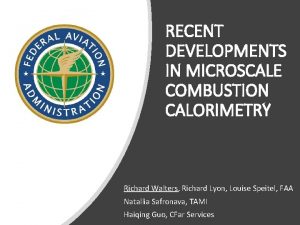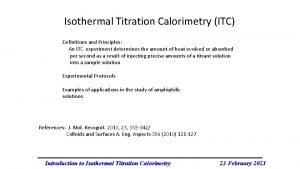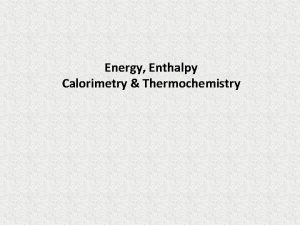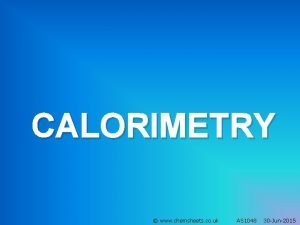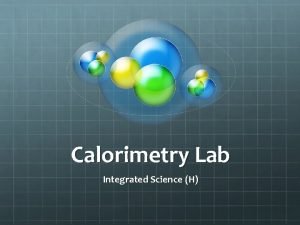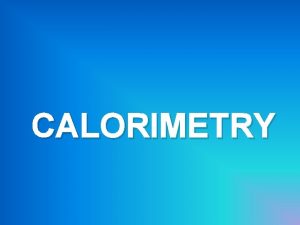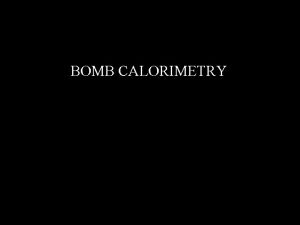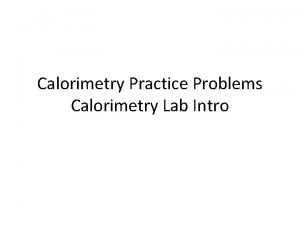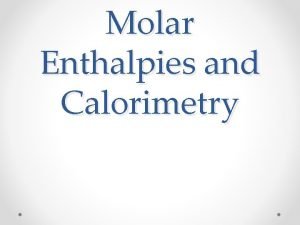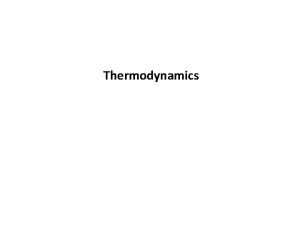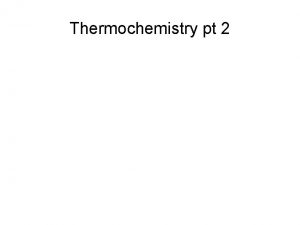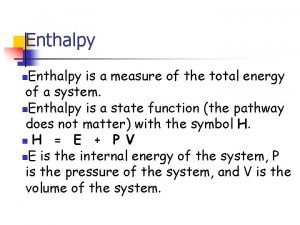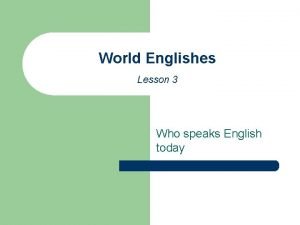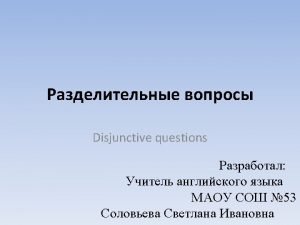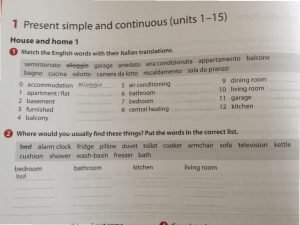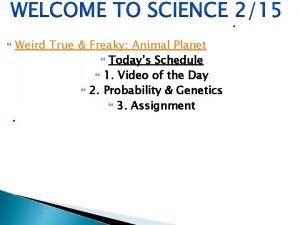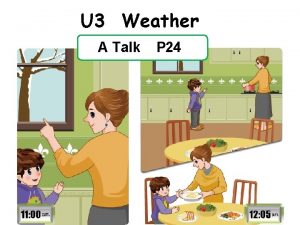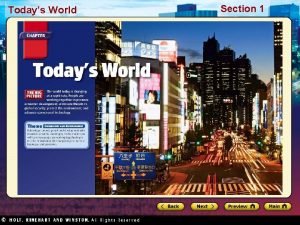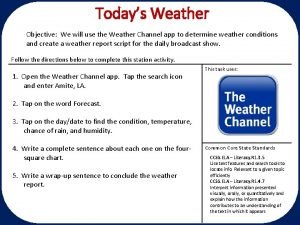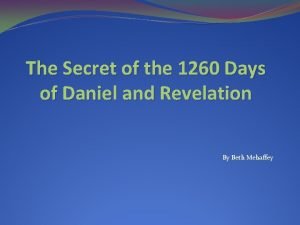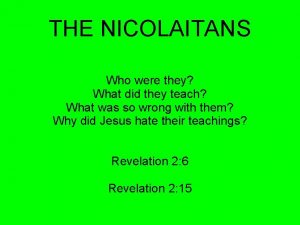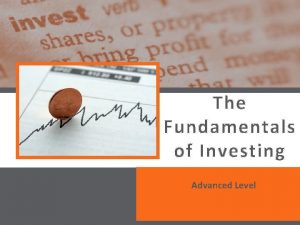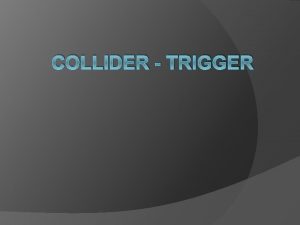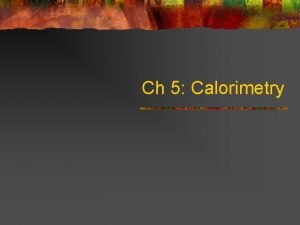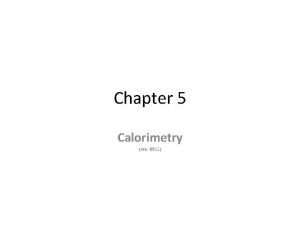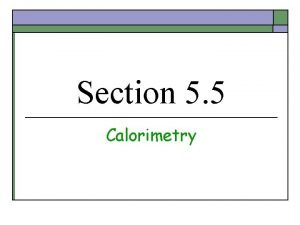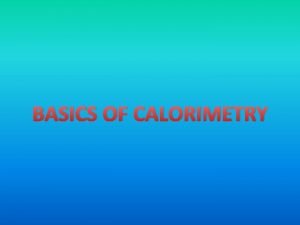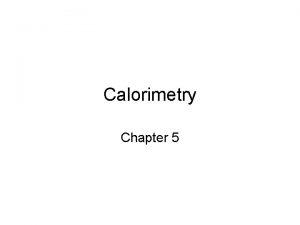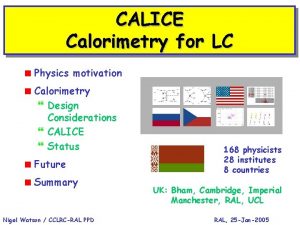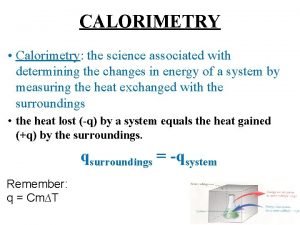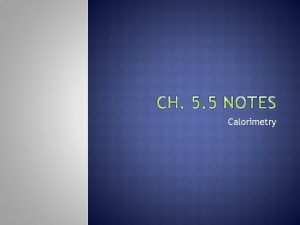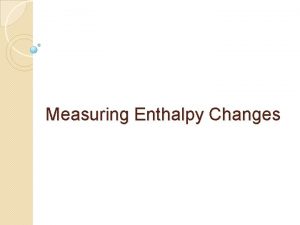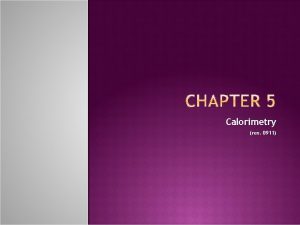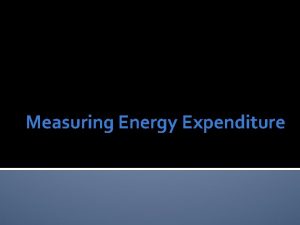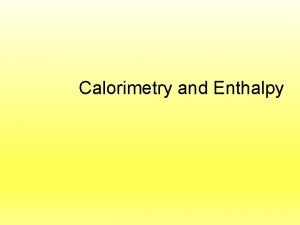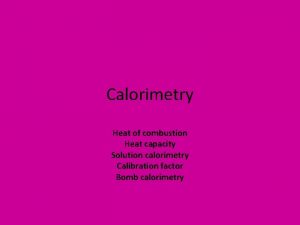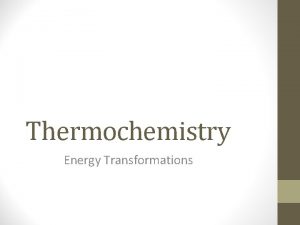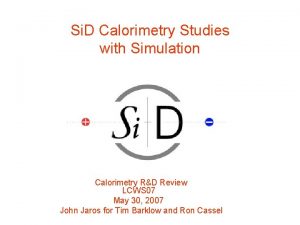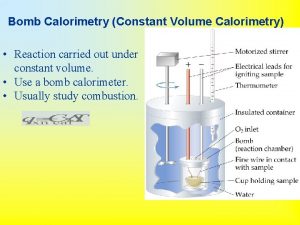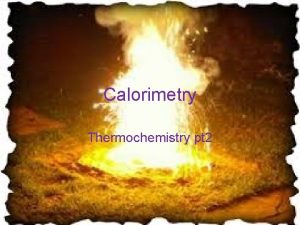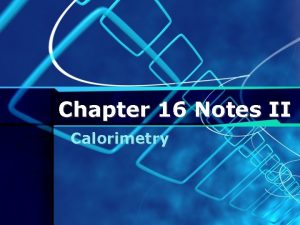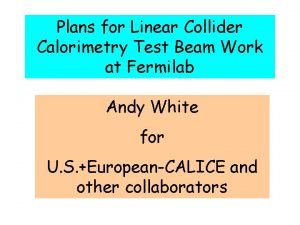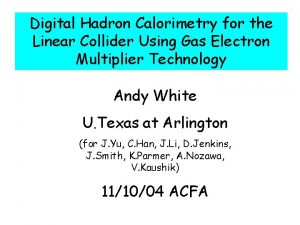Review on EM calorimetry Collider calorimetry today status
























































- Slides: 56

Review on EM calorimetry Collider calorimetry today: status and possible developments Speculations on the future needs Apologies: in order to be focused on issues related to performance at extreme colliders I will consider only ATLAS and CMS as representative of current baseline. This does not imply any quality judgment on the variety of extraordinary calorimeters available on the HEP market today 42 nd INFN Eloisatron workshop, Erice October 3, 2003 T. Camporesi, CERN

Framework • Present colliders: Lumi 1034 cm-2 s-1, E=14 Te. V, bunch spacing 25 ns • Future colliders: – Minimal (SLHC): Lumi 1035 cm-2 s-1, E=14 (28) Te. V – Maximal(Eloisatron, VLHC): Lumi 1035 -1036 cm-2 s-1, E=100 Te. V Possibly with bunch spacing < 5 ns • Keep in mind that physics is the driver (and today we do not really know what is in store past LHC) 42 nd INFN Eloisatron workshop, Erice October 3, 2003 T. Camporesi, CERN

Major constraints • Radiation: up to and beyond 100 MRad: major constraint for any calorimeter technique and for electronic readout • Time response: present day electronics barely copes with bunch structure • Pileup of interactions (>20 interactions/crossing @LHC) 42 nd INFN Eloisatron workshop, Erice October 3, 2003 T. Camporesi, CERN

Photon detection with calorimeters Substitute for Heat: HEP area of interest: well established… no real novel developments for hadron colliders Ionization charge Scintillation light Cerenkov light Phonons Sound waves Activated halides Radiation Damage Nuclear Transmutation Neutron Flux Shock Wave Seismic Waves …. 42 nd INFN Eloisatron workshop, Erice October 3, 2003 T. Camporesi, CERN

LHC calorimeters • Main physics manifesto: low mass higgs decaying into gg (reject p 0, good energy and angular resolution for mass reconstruction and primary vertex identification). In reality a bit of an excuse: with material budget in excess of 1 X 0 (in a multi Tesla field) the bare calorimeter performance is less important. Nevertheless the implied fine grain and projectivity are a must to cope with the particle flow Sampling, leakage, Landau, intrinsic Inhomogeneities, intercalibration, effect of material in front Noise, pileup, radioactivity Goal: c<10%, b<1% 42 nd INFN Eloisatron workshop, Erice October 3, 2003 T. Camporesi, CERN

Material budget TDR CMS ATLAS In Front of presampler Material in Tracker better evaluated Tracker R&D should look after infrastructure more than sensor material budget ! 42 nd INFN Eloisatron workshop, Erice October 3, 2003 T. Camporesi, CERN

Effect of material in front of calorimeter CMS MC: 35 Ge. V pt electrons, <1. 5 (courtesy C. Seez) Worst effect is not so much energy lost, but the confusion induced by the brem spray. E/p for simulated W to en evts in CMS Red no brems Black no selection Blue pattern reco cuts to reject hard brem Energy tails are smaller than momentum tails 42 nd INFN Eloisatron workshop, Erice October 3, 2003 T. Camporesi, CERN

Homogeneous Calorimeters: crystals (CMS, ALICE) Crystal Ball, Spear, 1978 Major advances in last decade: eg. L 3 11000 crystals, 1. 1 ms, homogeneity 1% vs CMS 100000 crystals, 50 ns, 0. 4% homogeneity!) 42 nd INFN Eloisatron workshop, Erice October 3, 2003 T. Camporesi, CERN

PBWO crystals have come a long way 50 40 1995 1998 20 dic-00 set-00 giu-00 mar-00 dic-99 set-99 giu-99 0 '95 crystal mar-99 0 '98 crystal 40 20 10 dic-98 60 Theoretical transmission set-98 Transmission (%) 100 80 30 Dimensions Transmission Light Yield Decay time Slope/Rad. hardness 300 350 400 450 500 550 600 650 700 Wavelength (nm) u 1994 -1998 R&D phase u 1998 -2000 : Pre-Production of 6000 crystals u 2001 : Start of the Production 42 nd INFN Eloisatron workshop, Erice October 3, 2003 T. Camporesi, CERN

CMS calo structure • PWO Light Yield is rather low: ~10 pe/Me. V so photon sensors with some amplification are needed (Avalanche Photo. Diodes in the barrel, Vacuum. Photo. Triodes in the Endcap) ÞLow S/N ratio and complex electron 42 nd INFN Eloisatron workshop, Erice October 3, 2003 T. Camporesi, CERN

g Light readout Si 3 N 4, Si. O 2, contact p++ photon conversion p e- acceleration n e- multiplication n- e- drift n++ e- collection = 26. 5 mm contact Internal gain=50 for V=380 V MESH ANODE Single stage photomultiplier tube Two APDs per capsule Barrell: 50% delivered 42 nd INFN Eloisatron workshop, Erice October 3, 2003 ENDCAP: 25% delivered Gain 8 -10 at B=4 T, QE ≈ 20% at 420 nm T. Camporesi, CERN

CMS ECAL Read out chain • On-detector Light-to-Light readout • All radiation hard • High dynamic range (50 Me. V 2 Te. V) Current Voltage ® ® Bits Voltage Bits Light ® Upper-Level Readout ≈ 1000 boards, Upper-Level Readout in counting room ≈ 220 boards, in. Pipeline counting room To DAQ S Pipeline To ULR ADC APD VPT Floating-Point Preamplifier ADC new version 2001 12 -bit 40 MHz 4 gain ranges analog gain selection 42 nd INFN Eloisatron workshop, Erice October 3, 2003 Trigger Digital Trigger Sum Very Front End Board, 1/5 chan Pb. WO 4 Crystal To Trigger one optical link Fiber per crystal Readout Digital Trigger Sum 800 Mbit/s S To Trigger Front End Board, 1/25 channels, FENIX chip three optical links per Trigger Tower 25 xtals 800 Mbit/s T. Camporesi, CERN

CMS ECAL features temperature measured on AP 0. 06°C 2 months Light yield dependance from T -2%/C Challenge: 92300 kg of crystal dissipating 200 KW… and temp controlled to 0. 1 degrees Separate cooling for crystals and electronics 42 nd INFN Eloisatron workshop, Erice October 3, 2003 T. Camporesi, CERN

T control to < 0. 1 C 12 o’clock 6 o’clock w/o cavalier Small convection effect, <0. 02ºC> 42 nd INFN Eloisatron workshop, Erice October 3, 2003 T. Camporesi, CERN

CMS Resolution s/E total a = stochastic, 2. 7% b = calib, LY non-unif. , 5 ‰ c = noise, < 200 Me. V (ECAL TDR) High Lumi Low Lumi • If you want precision… – Longit. and lateral shower containment – Light production, collection uniformity – Nuclear counter effect (APD) – Stability of PD gain – Channel to channel intercalibration – Electronic noise – Temperature stability and uniformity – Radiation damage – Pileup –. . . Stochastic term dominated by photon statistics 42 nd INFN Eloisatron workshop, Erice October 3, 2003 T. Camporesi, CERN

Test-beam performance The single crystal can achieve the goal 280 Ge. V electrons preprod. crystals (1999) Resolution as a function of energy 42 nd INFN Eloisatron workshop, Erice October 3, 2003 T. Camporesi, CERN

CMS Ecal rad dam Dose rate at high L in the Barrel is 0. 15 – 0. 3 Gy/h in the Endcaps 0. 3 -15 Gy/h EB 0. 15 EE Dose rates [Gy/h] in ECAL at luminosity L=1034 cm-2 s-1 [cm] Total dose after 10 years of running (5 x 105 pb-1) EE 42 nd INFN Eloisatron workshop, Erice October 3, 2003 Total dose in the barrel after 10 years at the LHC is ˜ 2*103 Gy [Gy] T. Camporesi, CERN

CMS ECAL rad dam Front irrad. , 1. 5 Gy, 0. 15 Gy/h LYloss=(LY 0 -LYirr)/LY 0 (%) 80 50 40 30 initial 20 after irradiation 100 Statistics on 368 crystals. Mean : This behaviour is 2. 45 % 80 St. Dev : very sensitive to 1. 06% good stoechiometry 60 and annealing 40 20 10 Rejected for LT@350 nm < 10% T(%) 60 Rejected for LTslope < 1. 5%/m LYirr/LY 0 (%) 70 0 0 0. 51 1. 52 2. 53 3. 54 4. 55 5. 56 6. 57 7. 58 8. 59 9 LY loss (%) 0 300 350 400 450 500 550 600 650 700 wavelength (nm) 1) Scintillation mechanism not 2) Saturation level (reached 2) affected but Transparency loss after a few hours of LHC!) 42 INFN Eloisatron workshop, Erice October 3, 2003 T. Camporesi, CERN nd

Radiation damage certification • Irradiation of ingot’s top and bottom • parts – All crystals – At Bogoroditsk – To control radiation hardness uniformity • • • High dose & dose rate side irradiation (induced absorption at all l) – Sampling (20%) – At Geneva hospital (CERN) – To control absolute radiation hardness & uniformity – Sampling (20%) • Low dose rate front irradiation (LY – At Bogoroditsk after March 99 – To control absolute radiation hardness and loss) uniformity (att > 75 cm ) – Sampling (20%) – At CERN (TIS) Transverse transmission along the – To control radiation hardness in LHC crystal conditions – All crystals – At Bogoroditsk and at CERN • Low dose rate side irradiation – To control doping uniformity Longitudinal transmission band edge slope – All crystals – At Bogoroditsk and at CERN – To predict radiation 42 nd INFN Eloisatron workshop, Ericehardness October 3, 2003 (transmission loss at ≠ l) – Sampling (20%) – At CERN (X 5) – To control radiation hardness uniformity T. Camporesi, CERN

Laser monitoring Dispersion of a for 19 crystals signal from Beam (e-) Laser stable to 0. 1% ! a s/m = 6. 3 % a on top of a 5 -10 % effect signal from Laser Þ Use of same coefficient for Þall crystals possible !. . . and no need of pre-irradiaton Measure relative light loss after/during irradiation for beam and laser: laser can be used to track 42 nd INFN Eloisatron workshop, Erice October 3, 2003 changes (and parametrization is straighforward) T. Camporesi, CERN

• • Calibration As most of shower is contained in a single crystal the precision of the absolute intercalibration of single crystals contributes directly to the constant term. Due to project delay and the stop of the beams at CERN in 2005 only few of the crystals will be calibrated on beam. For the startup will have to rely on precalibrations done in the lab (~2 -4%). The in situ calib using physics events will have crucial importance! Monitoring fibers being mounted on the back of an ECAL SM 42 nd INFN Eloisatron workshop, Erice October 3, 2003 T. Camporesi, CERN

CMS ECAL ~20000 barrel crystals accepted First supermodule assembled in spring 2002 (5 by end 2003) 2 in one! 42 nd INFN Eloisatron workshop, Erice October 3, 2003 T. Camporesi, CERN

Few photos 42 nd INFN Eloisatron workshop, Erice October 3, 2003 T. Camporesi, CERN

More photos Before annealing After cut and annealing 42 nd INFN Eloisatron workshop, Erice October 3, 2003 T. Camporesi, CERN

Ionisation calorimeters: Liquid Argon ATLAS d Ionizing particle i(t) Willis & Radeka , 1974 td Major progress done in recent years (mostly thanks to RD 3 and NA 48 and ATLAS) on detector structure, speed of response (e. g. H 1 45000 channels, 2. 4 ms shaping) Advantages: uniformity, flexibility of electrode geometry, speed Disadvantages: difficult to build (cryogenics …) 42 nd INFN Eloisatron workshop, Erice October 3, 2003 T. Camporesi, CERN

The ATLAS LAr system =0 EM Barrel =1. 4 EM End. Cap IP 42 nd INFN Eloisatron workshop, Erice October 3, 2003 =3. 2 =4. 9 FCAL T. Camporesi, CERN

ATLAS LAr : the basic structure Argon double gap 2 x 2 mm Thickness of absorber plates: 1. 1 mm for pseudorapidities > 0. 8 and 1. 5 mm close to the center of the detetctor: total of ~26 X 0 42 nd INFN Eloisatron workshop, Erice October 3, 2003 T. Camporesi, CERN

ATLAS LAr Direction of gs: strip towers in 1 st sampling…. First fine grained sampling acts as a pre-shower for g/p 0 separation Factor 3 p 0 rejection at Et=50 Ge. V Factor 5000 jet rejection for Ejet>20 Ge. V 42 nd INFN Eloisatron workshop, Erice October 3, 2003 T. Camporesi, CERN

Signal processing • • Beam Crossing 25 ns, drift time 400 ns Minimum bias events, noise As LAr is a 0 -gain device calibration can be achieved by injecting a pulse ‘shaped’ as close as possible to ionization current Calibration Board Front End Board 42 nd INFN Eloisatron workshop, Erice October 3, 2003 T. Camporesi, CERN

ATLAS Electronics: requirements 42 nd INFN Eloisatron workshop, Erice October 3, 2003 T. Camporesi, CERN

Signal shaping Electronic noise Pileup noise 42 nd INFN Eloisatron workshop, Erice October 3, 2003 T. Camporesi, CERN

Noise and granularity 42 nd INFN Eloisatron workshop, Erice October 3, 2003 T. Camporesi, CERN

Atlas LAr: T dependence Due to the fast shaping (sampling of the initial current) the dependance on the LAr temperature is not only through density (as for time-integrating LAr calorimeters) but also through the drift velocity In agreement with expectation : 2% / K on the energy 42 nd INFN Eloisatron workshop, Erice October 3, 2003 AIM to have < 0. 3 °K temp difference between any point of the calo bath T can be monitored from the data themselves by logging the full pulse (negative lobe) for sample events Bonus of fast readout: less sensitive to electronegative impurities (monitored by test. CERN cells) T. Camporesi,

Construction difficulties From finished barrel wheels: HV : 22/28672 channels show a problem (offline correction needed) Readout: 4/53014 channels dead… Impressive QC! 42 nd INFN Eloisatron workshop, Erice October 3, 2003 T. Camporesi, CERN

ATLAS performance Reconstruction not trivial: 5 time samples used to smooth noise Correct for containment Correct for cathode modulation Noise: presampler, strip, middle and back 42 nd INFN Eloisatron workshop, Erice October 3, 2003 T. Camporesi, CERN

ATLAS performance 42 nd INFN Eloisatron workshop, Erice October 3, 2003 T. Camporesi, CERN

ATLAS LAr uniformity Constant term =0. 93 % Constant term =0. 94 % 42 nd INFN Eloisatron workshop, Erice October 3, 2003 T. Camporesi, CERN

Few pictures Closing of 1 st wheel 42 nd INFN Eloisatron workshop, Erice October 3, 2003 T. Camporesi, CERN

More pictures 42 nd INFN Eloisatron workshop, Erice October 3, 2003 T. Camporesi, CERN

More pictures The first wheel inside the cryostat 42 nd INFN Eloisatron workshop, Erice October 3, 2003 T. Camporesi, CERN

Absolute Calibration in situ • Imposing symmetry obtain intercalibration of towers to 1 -2% relative in few hours • The best calibration of ECALs will be using the Z 0 and W produced at LHC: Z →e+e- has a rate ~1 Hz. The constrained mass fit (no tracker info necessary) will give the calibration (production almost flat in ) estimate to achieve absolute 1 -2% in a few days • W →en is even more copious e. g. CMS estimates to obtain 0. 5% error on crystals cross calibration using e/p (once tracker is understood!) 42 nd INFN Eloisatron workshop, Erice October 3, 2003 T. Camporesi, CERN

(Near? ) Future collider: SLHC /cm 2 sec fb-1/yr 42 nd INFN Eloisatron workshop, Erice October 3, 2003 Main problem for trackers, barrel calorimeters should not suffer too much, Impact on forward is major. T. Camporesi, CERN

SLHC: EM cals • ATLAS: – Space charge effects: if drifting ions start modifying the field near the anode signal is affected (onset of regime goes like V 2/d 4 m, V volt, d gap and m ion mobility). Measurements in test beam show 1% loss with energy flow 5 106 Ge. Vcm-2 s-1 Might decide to use cold pressurized gas or LKr in this region! 42 nd INFN Eloisatron workshop, Erice October 3, 2003 T. Camporesi, CERN

SLHC, ATLAS cont. • Voltage drop due to ionization currents: the HV supply chain has resistors meant to decouple the various electrodes. At low temperature the value of the resistor increases by a factor 10 (possibly with large fluctuation). Cold pressurized gas will do… 42 nd INFN Eloisatron workshop, Erice October 3, 2003 T. Camporesi, CERN

SLHC, CMS ECAL • Irradiation will reach 1. 5 Gy/h at shower max in the barrell (which corresponds to the LHC situation at =2. 4) and 75 Gy/h at h=3. This is close to the ‘saturation’ irradiation condition used during the crystal acceptance when irradiating at the Hopital Cantonal. Should lead to a, manageable 25% light loss. • As for other readout component one expects deterioration of noise/crystal up to 100 Me. V. • More extensive studies are needed to see long term effects and to test all other components (even if one does not anticipate show stoppers) 42 nd INFN Eloisatron workshop, Erice October 3, 2003 T. Camporesi, CERN

SLHC, calorimeter electronics • Running the current electronics at 80 MHz is impossible for both ATLAS and CMS. Could be possible to use the 40 MHz sampling and several time samples to reconstruct the actual bunch crossing. Need further studies. • Effects of pileup on physics have to fully assessed…. 42 nd INFN Eloisatron workshop, Erice October 3, 2003 T. Camporesi, CERN

Future colliders: exploring new physics (LHC should show the way) • Parton cross section ~1/seff hence Luminosity should increase like s=E 2 if we want to ‘saturate’ physics reach: aim to 1036 cm 2/s Courtesy D. Green 42 nd INFN Eloisatron workshop, Erice October 3, 2003 T. Camporesi, CERN

Effect of min bias Occupancy for a detector element at a distance r of area d. A for a time dt with a luminosity l and a min bias pion density rc To deal with increased min bias noise: get smaller or faster or further away (possibly combination of the three!) For calorimeters today’s structures might be ~adequate, but getting faster will most likely be a requirement anyway due to accelerator bunch spacing! 42 nd INFN Eloisatron workshop, Erice October 3, 2003 T. Camporesi, CERN

How much faster to cope with Minimum bias increase ? smin bias ~log(s) ~log(E) The fluctuations induced by pileup can be parametrized as Where t is the signal shaping time. Constraints from beam structure 42 nd INFN Eloisatron workshop, Erice October 2003 likely to 3, be more severe! Not Too Bad ! T. Camporesi, CERN

• • (Far? ) Future(? ) collider: The detector for the Eloisatron/VLHC Tracker at r >30 cm ( radiation) Physics: discovery of ‘predicted’ particles after LHC or measurement with high stats of ‘discovered’ particle. If this needs lepton id and/or accurate photon reconstruction then tracker structure should compromise: three ‘sets’ of (4 strip+1 pixel? ) clustered at 3 radii (30 -100 -170? ) so to allow easier recovery of converted photons, brems of electrons (instead of distributing uniformly the layers in radius) With increasing E calorimeters will become more and more important: DE/E goes constant at worse, while Dp/p grows like p Depending on the scale of particles sought for the ‘shower’ maximum might become a discriminant: the min bias background will ‘max out’ earlier in the calorimeter. 42 nd INFN Eloisatron workshop, Erice October 3, 2003 T. Camporesi, CERN

A few more points Shape more important than central value • No matter the physics goal having a good gaussian response (no tails) will be more important than having a good jet energy resolution (avoid creation of fake missing Et): as it is difficult to imagine an EM calorimeter with a good e/p ratio, foresee tail catcher to use to weight in the HAD calorimeter response the fluctuations due to shower started in the ECAL… even more important if there is ‘empty’ space in high B field between ECAL and HCAL. 42 nd INFN Eloisatron workshop, Erice October 3, 2003 m like e At some point (E>300 Ge. V) Muon cannot be considered a particle that only ionizes ! T. Camporesi, CERN

Detector sketch Tracker: 3 sets of 5 layers (ID>50 cm) EM cal(LAr? ): 3 longitudinal samplings, 2 cm ( , )granularity (ID>200 cm), 30 X 0 Tail catcher Coil HAD CAL m system 42 nd INFN Eloisatron workshop, Erice October 3, 2003 T. Camporesi, CERN

Forward region • The forward region EM calorimeter structure will be determined mainly by the radiation field: liquid ionization counters will have space charge problems: My guess is that only gas ionization will withstand the environment and allow the necessary granularity. 42 nd INFN Eloisatron workshop, Erice October 3, 2003 T. Camporesi, CERN

Electronics • Hard to guess, but if the trend continues it should not be a major problem: smaller integration scales tend to increase rad hardness beside speed. 42 nd INFN Eloisatron workshop, Erice October 3, 2003 T. Camporesi, CERN

Conclusions • EM calorimeters technology for hadron colliders is fully developed • SLHC will require ‘minor’ adaptation (may be with some changes in the forward region) • For a VLHC present day technology (e. g. LAr, LKr, crystals? ) would probably do. Main r&d needed is on the readout side: do not expect major problems with rad hardness, but the challenge is to gain a factor ~5 in shaping time. 42 nd INFN Eloisatron workshop, Erice October 3, 2003 T. Camporesi, CERN

Aknowledgements • I would like to thanks F. Gianotti, D. Fournier, P. Bloch, P. Lecoq, D. Green and all the colleagues in the calorimeter teams of ATLAS and CMS • Best references are the TDR of the calorimeters and for recent developments/status report check the web sites of the calorimetry conferences Calor 2000 : http: //wwwlapp. in 2 p 3. fr/Calor 2000/Welcome. html Calor 2002 : http: //3 w. hep. caltech. edu/calor 02/ 42 nd INFN Eloisatron workshop, Erice October 3, 2003 T. Camporesi, CERN
 Fcc collider
Fcc collider Fcc collider
Fcc collider Bnl
Bnl Muon collider
Muon collider Language
Language Unity sphere collider
Unity sphere collider Hadron collider
Hadron collider Hadron collider
Hadron collider Martinello colider
Martinello colider International linear collider
International linear collider Today meeting or today's meeting
Today meeting or today's meeting How was today's class
How was today's class Proposal kickoff meeting agenda
Proposal kickoff meeting agenda Characteristic of fingerprint
Characteristic of fingerprint Today's lesson or today lesson
Today's lesson or today lesson Today's lesson or today lesson
Today's lesson or today lesson Project status review
Project status review Calorimetry equation
Calorimetry equation Calorimetry questions
Calorimetry questions Pearson calorimetry simulation
Pearson calorimetry simulation Microscale combustion calorimetry
Microscale combustion calorimetry Itc calorimetry principle
Itc calorimetry principle Thermochemistry calorimetry
Thermochemistry calorimetry Chemsheets calorimetry 2 answers
Chemsheets calorimetry 2 answers Food calorimetry lab
Food calorimetry lab What is q in enthalpy
What is q in enthalpy Bomb calorimetry
Bomb calorimetry Calorimetry practice problems
Calorimetry practice problems Calorimetry lesson
Calorimetry lesson Calorimetry equation
Calorimetry equation Calorimetry
Calorimetry Intro to thermochemistry
Intro to thermochemistry Constant pressure calorimetry
Constant pressure calorimetry Chapter review motion part a vocabulary review answer key
Chapter review motion part a vocabulary review answer key Ap gov final review
Ap gov final review Nader amin-salehi
Nader amin-salehi Search strategy example
Search strategy example Narrative review vs systematic review
Narrative review vs systematic review English today 3
English today 3 Anyone absent today
Anyone absent today Which blob do you feel like today
Which blob do you feel like today Did you do your homework
Did you do your homework What's the weather like?
What's the weather like? Weird true and freaky
Weird true and freaky She is beautiful isn't she grammar
She is beautiful isn't she grammar Dear ladies and gentlemen
Dear ladies and gentlemen Today weather
Today weather Tragic love: an introduction to romeo and juliet notes
Tragic love: an introduction to romeo and juliet notes What is tragedy
What is tragedy The world today part 1
The world today part 1 Weather report script today
Weather report script today Rprefer
Rprefer Daniel 1260 days
Daniel 1260 days Orginal markz
Orginal markz Who are the nicolaitans today
Who are the nicolaitans today Fundamentals of investing
Fundamentals of investing Davidian today
Davidian today
